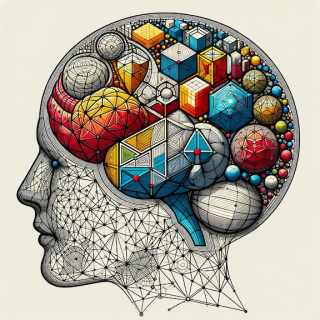Artificial Intelligence
Revolution Reimagined: Bridging the '60s Spirit to the AI Age
AI's paradox lies in its potential to both enforce and break societal norms.
Updated January 11, 2024 Reviewed by Michelle Quirk
Key points
- Marcuse's critique of social conformity is echoed in today's AI impact.
- Balancing AI's societal influence involves nurturing knowledge and diversity, avoiding conformity.
- AI, as a cognitive tool, fosters a new era of intellectual exploration and diverse thought.

Herbert Marcuse's One-Dimensional Man offers a thought-provoking critique of advanced industrial societies, particularly focusing on the roles of technology, consumerism, and media in shaping public consciousness. Marcuse's thesis, rooted in the idea that these forces create "false needs" and standardize thought, has been a subject of both acclaim and controversy to foothold in the 1960s. He suggests that technology and consumer culture, far from being neutral, play a significant role in imposing a kind of intellectual conformity and eroding individualism. While Marcuse's ideas are linked to the Frankfurt School's critical theory and, by some, viewed as part of a socialist perspective, they undeniably provide a framework for analyzing the societal impacts of technological advancements.
The Artificial Intelligence Paradox and Echoes of Marcuse's Concerns
In the current landscape, where artificial intelligence, including large language models, plays a powerful and influential role, Marcuse's insights gain renewed relevance. AI embodies a paradox; it is a tool that could potentially perpetuate the one-dimensional thinking Marcuse warned against, yet it also possesses the capability to break these boundaries. The inherent risks of AI, such as algorithmic biases, echo Marcuse's concerns about technological influences on societal norms and thinking patterns.
Striking a Balance in the Age of AI
The challenge in this AI-dominated era is to find a balance. AI's influence in shaping societal norms and values is profound, not just in technological terms but also in framing how societies think and process information. The critical task is to harness AI's potential for expanding knowledge and cognitive diversity while being vigilant about not falling into digital echo chambers that could limit thought diversity and critical engagement.
Beyond One-Dimensionality: The Cognitive Age
In the Cognitive Age, AI is not just a technological advancement but also a catalyst for intellectual expansion. It offers opportunities for enhanced creativity, critical thinking, and innovative problem-solving. This era is marked by a synergy between AI's analytical capabilities and the creative and emotional depths of human intelligence.
AI's role transcends being a mere tool; it emerges as a partner in the journey of intellectual exploration and cognitive renaissance. This partnership is vital in nurturing a society that values diverse thought, critical engagement, and creative expression, all while being aware of AI's potential pitfalls. Simply put, AI is expressive, not suppressive.
Looking forward, the integration of AI in creating a rich, multidimensional cognitive reality is both promising and challenging. It signals a shift toward a new cognitive reality, aligning technological advancement with ethical values with human-centricity. This future is not just about technological transformation but also about a transformative leap in human cognition, facilitated by the interplay of human and artificial intelligence.
Cycles of Change
Today, we seem to be at the crossroads of another societal shift. And it's interesting to draw parallels with the 1960s—a decade marked by social upheaval and transformative disruption. Much like the 1960s challenged the status quo and sparked a reevaluation of societal norms, today's era, dominated by the rapid advancements in AI, presents its own set of tumultuous changes and ethical quandaries. In our current landscape, AI stands at the heart of a similar revolution, not just technologically but also in the very fabric of our cognitive and societal structures.
This era beckons us to navigate through the complexities of AI, learning from the lessons of the past, to foster a future where technology does not confine us to a new version of one-dimensionality techno-reality but, rather, propels us toward a richer, more multidimensional understanding of our world and ourselves. In this recurrent cycle of disruption and renewal, the legacy of the 1960s serves as a reminder of the perpetual need for critical thought and the pursuit of diverse, multifaceted perspectives in the face of ever-evolving societal challenges.


